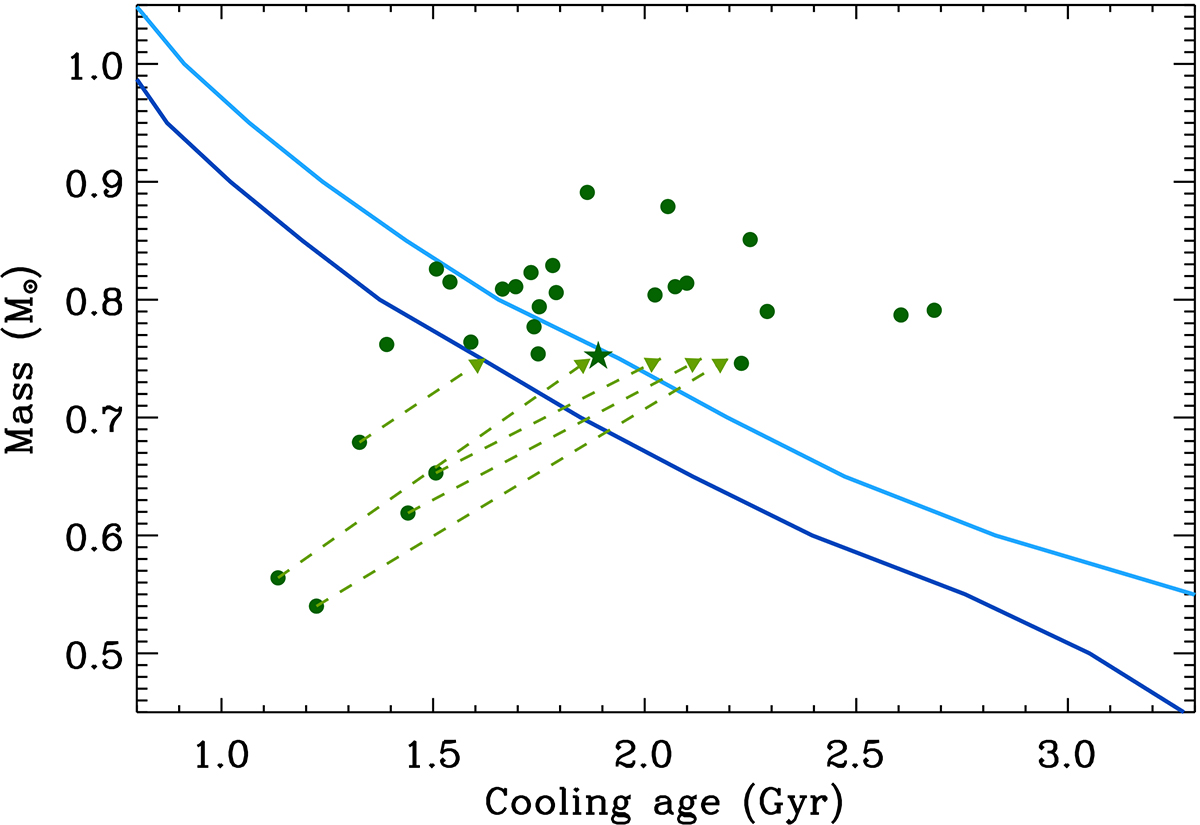Fig. 1.

Download original image
Mass versus cooling age for currently known DAHe white dwarfs, plotted as dark green circles (with a star marking GD 356). The dark and light blue lines trace the first non-zero core crystallization fraction in hydrogen-rich white dwarfs for thin and thick envelopes, respectively (Bédard et al. 2020). The masses and effective temperatures for all stars were taken from the Gaia EDR3 white dwarf catalog (Gentile Fusillo et al. 2021). While these adopted parameters are thus consistently derived, Gaia photometry alone does not provide a robust determination of effective temperature, where intrinsic photometric variability of DAHe stars, or missing model opacities may contribute to underestimated masses and cooling ages (e.g. Reding et al. 2020; O’Brien et al. 2024). For the lowest mass points in the diagram, the light green dashed lines trace their shift in cooling age, for the case where their masses are near the minimum value for the main cluster of stars. Thus, it is plausible that all DAHe white dwarfs appear after the onset of crystallization.
Current usage metrics show cumulative count of Article Views (full-text article views including HTML views, PDF and ePub downloads, according to the available data) and Abstracts Views on Vision4Press platform.
Data correspond to usage on the plateform after 2015. The current usage metrics is available 48-96 hours after online publication and is updated daily on week days.
Initial download of the metrics may take a while.


